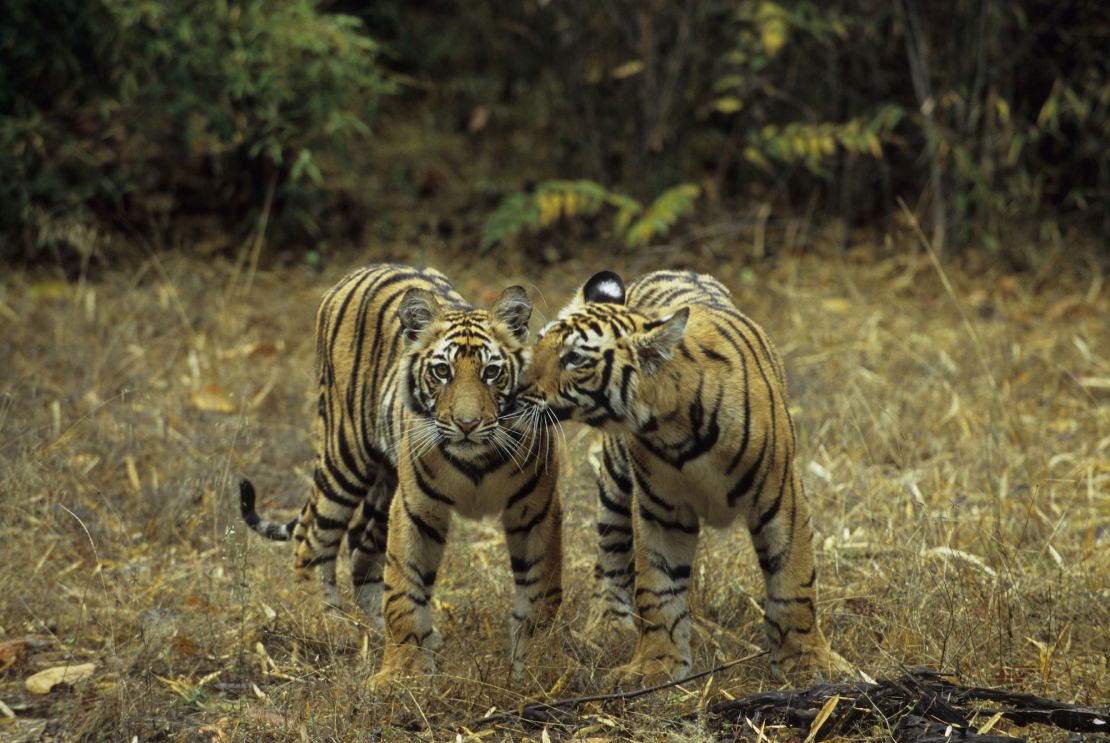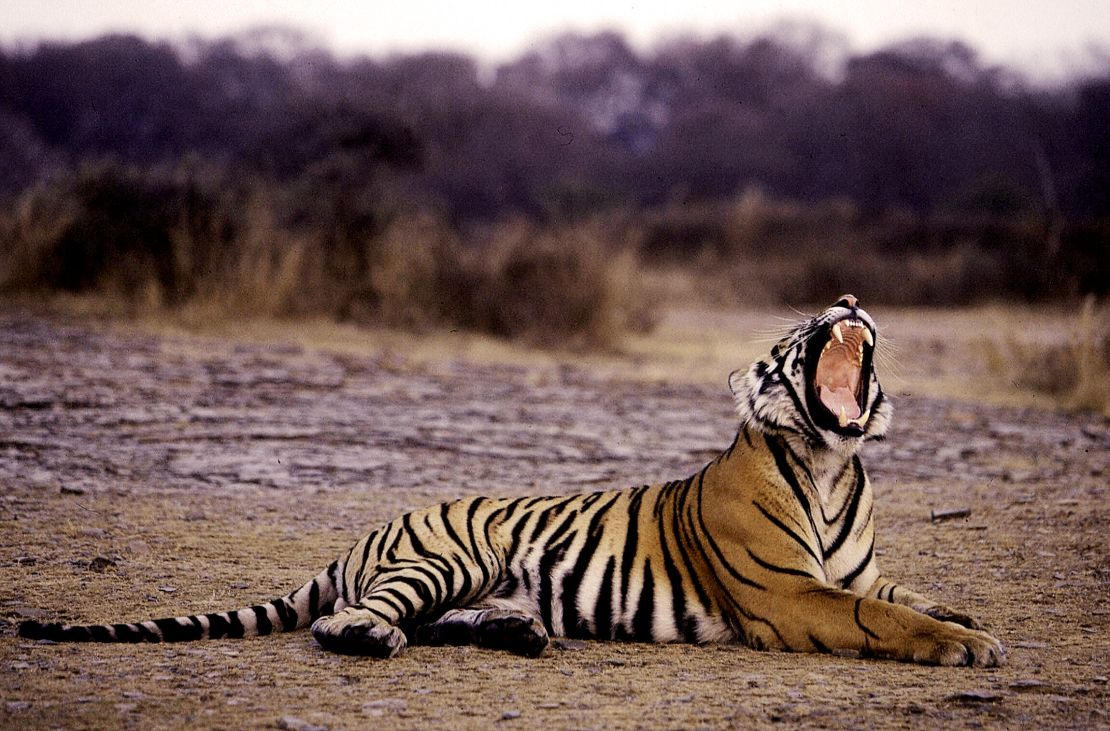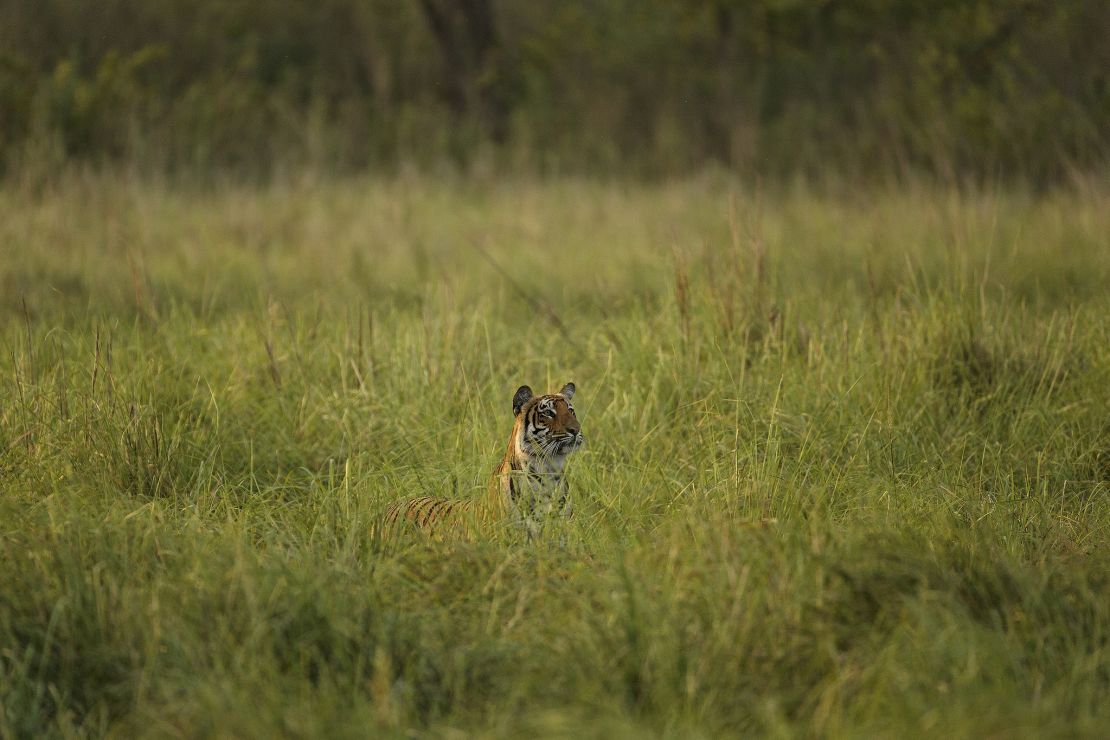Wanna see a real wild tiger? Head to India, where nearly half of the world’s remaining wild tiger population roams.
The country’s 1,400 big cats are spread over more than 40 national parks in the country.
To help increase the odds of spotting a tiger in India, we’ve narrowed your choices down to five places where it’s most likely you’ll get a good sighting.
1. Bandhavgarh National Park: Greatest chance of spotting a tiger

Bandhavgarh National Park is a wildlife sanctuary in Madhya Pradesh. It has the highest density of tigers in the region. The core area of the park is spread over 100 square kilometers and is home to more than 50 tigers.
The park is known as the land of the white tiger, even though white tigers no longer exist here. The last white tiger spotted in the wild was captured here by Maharaja Martand Singh of Rewa in 1951.
Other animals in the park include chital deer, sambar deer, barking deer, wild boar, nilgai antelope, four-horned antelope, Indian Bison, wild dog, leopard, blue bull, Indian fox and bear.
Insider tip: Hire a car for a trip to Bandhavgarh Fort, which is perched atop a 600-meter-high cliff overlooking the Vidhyan Mountains.
Best time to visit: The park is open from October to June, but the best time to see tigers is from April to June.
As temperatures rise, wildlife tends to congregate around watering holes.
Closest airport: Jabalpur Airport is 197 kilometers away, about four hours by car.
Where to stay: Bandhav Vilas. The 93-square-meter villas come with a bedroom, private deck and private courtyard with a rain shower.
Bandhav Vilas, Village Kuchwahi, Bandhavgarh, Madhya Pradesh
2. Ranthambore National Park: Best for scenic tiger photos

When you see a photograph of a tiger in India, it was mostly like taken at Ranthambore National Park.
One of India’s largest national parks at 1,334 square kilometers, and probably its most famed, Ranthambore is a favorite of wildlife photographers.
Once the hunting grounds of the Maharajas of Jaipur, the park gained celebrity status during the 1960s when Queen Elizabeth II visited and Prince Philip shot a tiger here. The park introduced protection for tigers from hunters in 1973 and is now one of the best tiger reserves in India.
One of the most interesting features of the park is that it’s dotted with ancient ruins, including a fort where tigers and leopards are often spotted.
Apart from tigers, the park is home to leopards, jungle cats, sloth bears, hyenas, Indian foxes, jackals and crocodiles.
Best time to visit: Though the park is open from October to June, winter months are cold while the oppressive temperatures in summer make it almost unbearable.
February and March have pleasant weather, but the greatest chances of spotting a tiger are in April and May.
Insider tip: The park has three lakes, Padam Talao, Raj Talao and Milak Talao, where wildlife tends to congregate. Tigresses and cubs are often spotted in the Bakaula area, which has dense forest cover and small watering holes.
Closest airport: Jaipur is 132 kilometers away, about three hours by car.
Where to stay: The Oberoi Vanyavilas, Ranthambore. The resort has 25 luxury tents spread over eight hectares, as well as a spa and two resident elephants.
The Oberoi Vanyavilas Ranthambore, Ranthambore Road, Rajasthan
3. Kanha National Park: Mowgli’s stomping ground
The picturesque Kanha National Park takes a leaf out of Rudyard Kipling’s “The Jungle Book.” The park has large open meadows where chances of spotting wildlife, including tigers, are high.
It’s not hard to imagine Mowgli striding through the grass, on the look out for Shere Khan.
Kanha is also home to the hard-ground barasingha, an endangered species of deer only found here. Other animals regularly sighted include chital, gaur, three-striped palm squirrel, common langur, jackal, wild pig, black buck, striped hyena, leopard, mouse deer, porcupine, chinkara, samber and ant-eating pangolin.
Insider tip: Book an early morning elephant safari from the Mukki entrance, which has fewer tourists.
Specify that you want a safari and not a tiger show in which elephants are trained to block tigers so tourists can get a good look at them.
Best time to visit: While the park is open from October to June, the best time to spot tigers is during the summer months from April to June.
Closest airport: Jabalpur Airport is 175 kilometers away, about three hours by car.
Where to stay: Banjaar Tola, a Taj Safari lodge, has 18 tented suites.
Banjaar Tola, Kanha National Park, Madhya Pradesh
4. Jim Corbett National Park: Best for vistas

The Jim Corbett National Park is one of India’s oldest parks, first established in 1936 as the Hailey National Park. In the mid-1950s, the park was dedicated to the legendary hunter-turned-conservationist Corbett.
Nestled in the foothills of the Himalayas, the 500 square kilometers of Corbett have a wide variety of terrain, from sal forests to marshes. In addition to tigers, you’re likely to spot leopards, jungle cats, fishing cats, sloth bears, jackals, Bharal, goral, Himalayan tahr, serow, chital, sambal and barking deer.
Corbett is also known as “elephant park” because of its large number of wild elephants; the Ramganga River is one of the best places to spot them.
Insider tip: On the eastern side of Corbett, Birani has numerous grasslands and water bodies that tend to attract tigers and their prey.
The park also has watchtowers such as the one at Dhikala where you could spend hours observing the wildlife.
Best time to visit: The park is open from October to June. However, the best time to spot tigers is from March to June, though visibility may be marred by dust.
Closest airport: Patnagar is 50 kilometers away, about one hour by car.
Where to stay: Jim’s Jungle Retreat. The six-hectare retreat offers safari tents, jungle cottages and lodges.
Jim’s Jungle Retreat, Village & PO Dhela, Ramnagar, Uttarakhand
5. Satpura National Park: Best for an adventure
Satpura National Park keeps a relatively low profile among the national parks of India. The park is relatively new, established in 1981, and less busy with tourists. Only 12 vehicles are allowed in the park at a time.
The park is home to tigers, hyena, leopards, gaur, sambar, chital, barking deer, chin Kara, mouse deer, wild boars, wild dogs, bears, black bucks, foxes, porcupines and flying squirrel.
Insider tip: Satpura is also the only park where walking is permitted, allowing visitors to skip the jeep safari and set off on foot with a guide.
In summer, head to the Sonbhadra River where the tigers swim.
Best time to visit: The most pleasant months to visit are from October to March, but April and May provide the best wildlife sightings.
Nearest airport: Bhopal is 135 kilometers away, about three hours by car.
Where to stay: Reni Pani Jungle Lodge. The quaint lodge houses 12 luxury villas and a spa.
Reni Pani Jungle Lodge, Sohagpur, Hoshangabad, Madhya Pradesh
Editor’s note: This article was previously published in 2012. It was reformatted, updated and republished in 2017.



